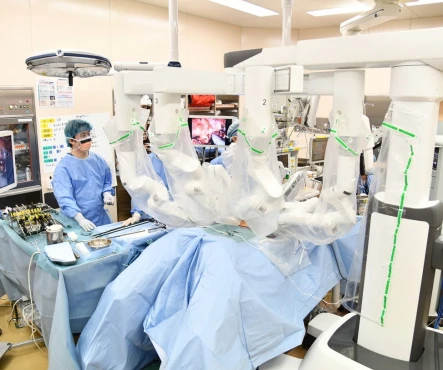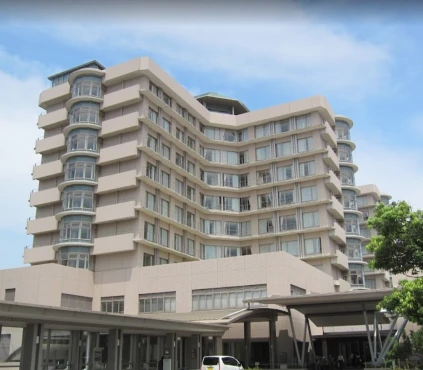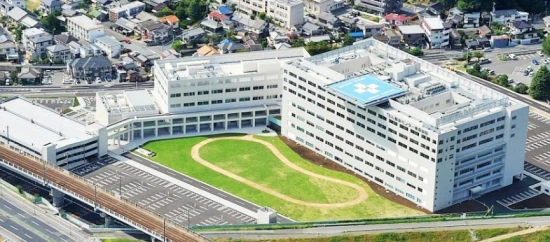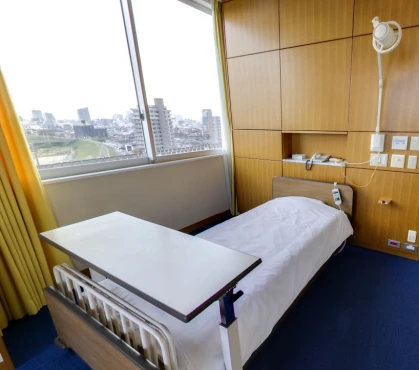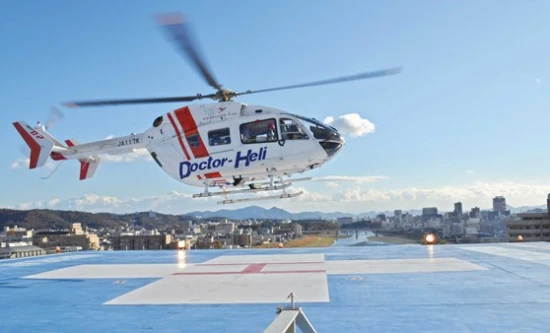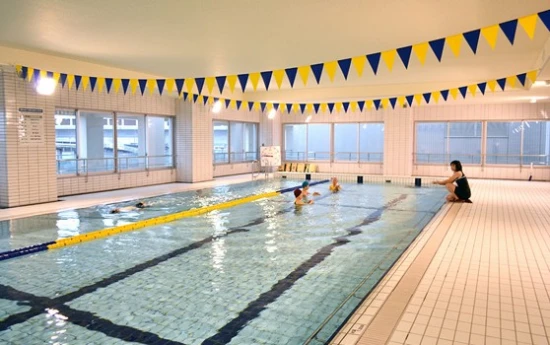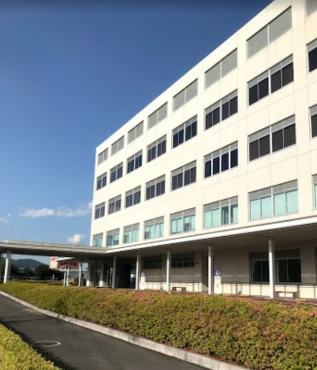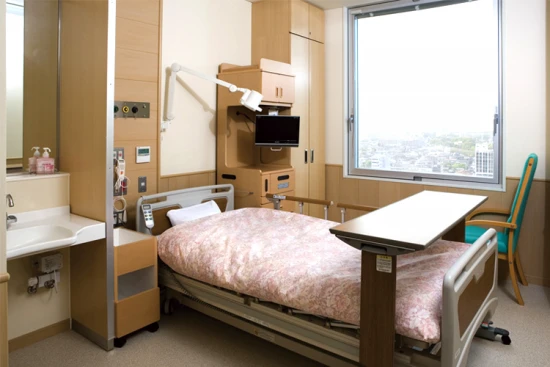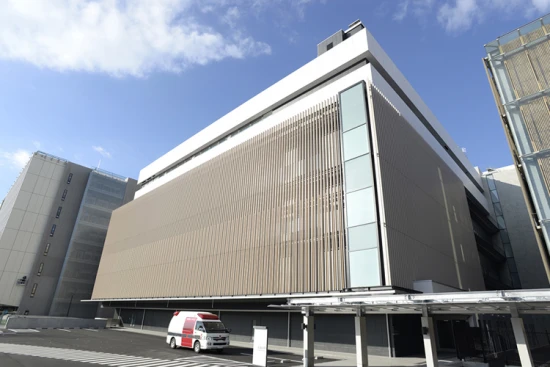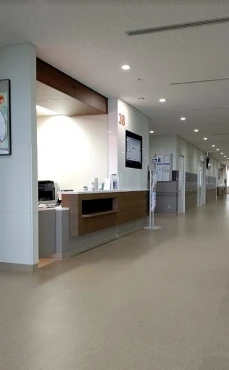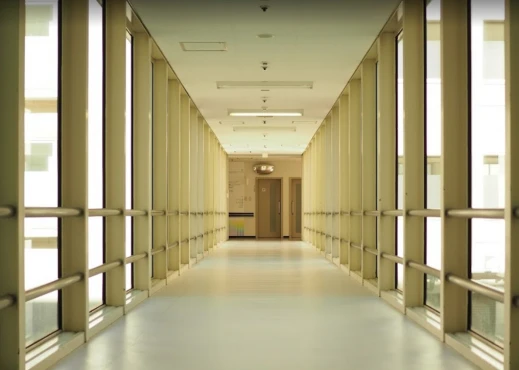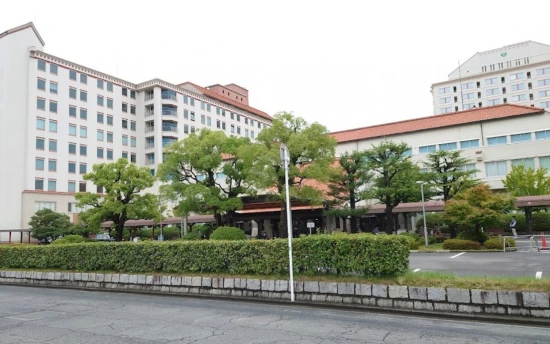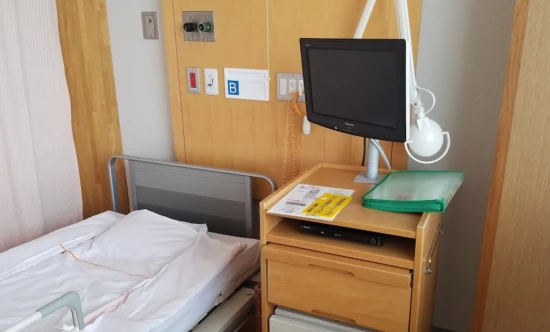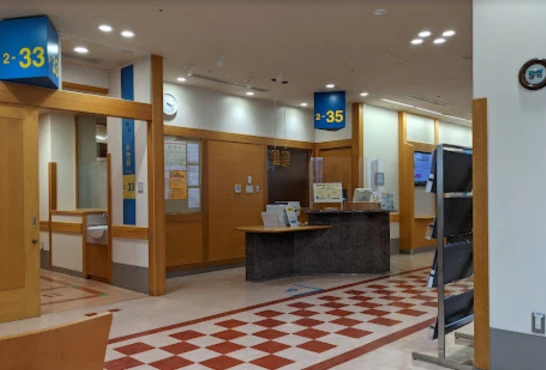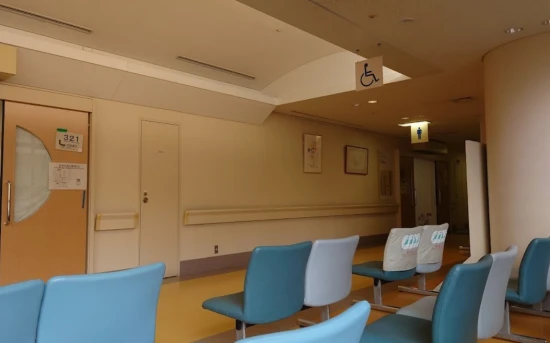Cardiac tamponade treatment in 1 Cardiac surgery clinic in Nagaizumi
1 clinic specializing in Cardiac surgery providing treatment of
Cardiac tamponade
Cardiac tamponade is a life-threatening condition where fluid accumulates in the sac around the heart, compressing it and impairing its function. It requires immediate medical intervention, including fluid drainage or surgery, to relieve the pressure and restore normal heart function.
Read more...
disease in Nagaizumi.
Besides this clinic there are 13 Cardiac surgery clinics in Japan.
Such diseases are treated by Shizuoka Cancer Center (SCC): Acute ST-elevation myocardial infarction (STEMI), Arrhythmia, Cardiac tamponade, Pericardial effusion, Pericarditis, and others.
-
Pericardial drainage
by request
-
Dual chamber pacemaker insertion
≈ $15,621
-
Coronary artery bypass graft (CABG)
≈ $42,573
-
Off-pump coronary artery bypass surgery
≈ $32,792
-
Permanent pacemaker implantation
≈ $16,592
-
Coronary catheterization
≈ $3,668
-
Redo heart surgery
≈ $36,680
-
Septal myectomy
≈ $22,039
-
Repair of the ruptured sinuses of Valsalva
≈ $27,489
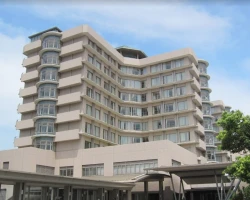
Nearby clinics in Japan
Perhaps you should consider the following clinics we have found nearby basing on your Location, Disease filters applied.
-
Dual chamber pacemaker insertion
≈ $15,621
-
Coronary artery bypass graft (CABG)
≈ $42,573
-
Heart valve replacement
≈ $52,851
-
Heart valve repair
≈ $39,384
-
Aortic valve replacement (AVR)
≈ $62,687
-
Mitral valve replacement (MVR)
≈ $51,053
-
Transcatheter aortic valve replacement (TAVR)
≈ $87,157
-
Off-pump coronary artery bypass surgery
≈ $32,792
-
Permanent pacemaker implantation
≈ $16,592
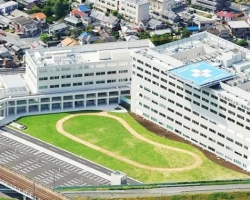
-
Dual chamber pacemaker insertion
≈ $15,621
-
Coronary artery bypass graft (CABG)
≈ $42,573
-
Heart valve replacement
≈ $52,851
-
Heart valve repair
≈ $39,384
-
Aortic valve replacement (AVR)
≈ $62,687
-
Mitral valve replacement (MVR)
≈ $51,053
-
Transcatheter aortic valve replacement (TAVR)
≈ $87,157
-
Off-pump coronary artery bypass surgery
≈ $32,792
-
Fontan procedure
≈ $34,770

-
Dual chamber pacemaker insertion
≈ $15,621
-
Coronary artery bypass graft (CABG)
≈ $42,573
-
Heart valve replacement
≈ $52,851
-
Heart valve repair
≈ $39,384
-
Aortic valve replacement (AVR)
≈ $62,687
-
Mitral valve replacement (MVR)
≈ $51,053
-
Transcatheter aortic valve replacement (TAVR)
≈ $87,157
-
Off-pump coronary artery bypass surgery
≈ $32,792
-
Fontan procedure
≈ $34,770

-
Coronary artery bypass graft (CABG)
≈ $43,728
-
Heart valve replacement
≈ $54,284
-
Heart valve repair
≈ $40,452
-
Aortic valve replacement (AVR)
≈ $64,388
-
Mitral valve replacement (MVR)
≈ $52,437
-
Transcatheter aortic valve replacement (TAVR)
≈ $89,521
-
Off-pump coronary artery bypass surgery
≈ $33,681
-
Atrial septal defect (ASD) repair
≈ $25,239
-
Ventricular septal defect (VSD) repair
≈ $29,887
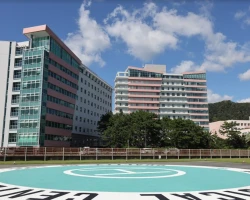
-
Coronary artery bypass graft (CABG)
≈ $43,728
-
Heart valve replacement
≈ $54,284
-
Heart valve repair
≈ $40,452
-
Aortic valve replacement (AVR)
≈ $64,388
-
Mitral valve replacement (MVR)
≈ $52,437
-
Transcatheter aortic valve replacement (TAVR)
≈ $89,521
-
Off-pump coronary artery bypass surgery
≈ $33,681
-
Radiofrequency ablation (RFA)
≈ $35,149
-
Coronary catheterization
≈ $3,767

-
Coronary artery bypass graft (CABG)
≈ $41,953
-
Heart valve replacement
≈ $52,080
-
Heart valve repair
≈ $38,810
-
Aortic valve replacement (AVR)
≈ $61,774
-
Mitral valve replacement (MVR)
≈ $50,309
-
Transcatheter aortic valve replacement (TAVR)
≈ $85,886
-
Off-pump coronary artery bypass surgery
≈ $32,314
-
Radiofrequency ablation (RFA)
≈ $33,723
-
Cardiac catheterization
≈ $4,702

Countries with the highest number of clinics treating the diseases:
Related procedures:
Quick navigation
- Heart tumor surgery ≈ $22,324
- Open-heart intracardiac foreign body removal ≈ $25,373
- Patent ductus arteriosus (PDA) open heart surgery in adults ≈ $10,200
- Surgery for tetralogy of Fallot (TOF) in adults ≈ $20,811
- Surgical ventricular restoration (SVR) ≈ $25,626
- Ventricular septal defect (VSD) repair ≈ $28,980
- Acute ST-elevation myocardial infarction (STEMI)
- Atrioventricular block
- Bradycardia
- Cardiac tamponade
- Chronic bifascicular block
- Chronic thromboembolic disease
- Infected pacemaker
- Intracardiac thrombus
- Left bundle branch block (LBBB)
- Left ventricular outflow tract obstruction (LVOTO)
- Non-ST-elevation myocardial infarction (NSTEMI)
- Pacemaker failure
- Patent foramen ovale (PFO)
- Pericardial effusion
- Pericarditis
- Pulmonary embolism (PE)
- Sinus node dysfunction
- Stent thrombosis
- Ventricular fibrillation (VF)
- Ventricular tachycardia (VT)




